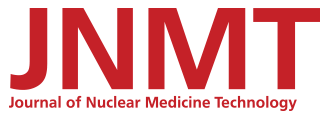Nuclear medicine and molecular imaging are unique among medical imaging specialties in that they rely not only on imaging techniques but also on organ- or pathology-specific biomarkers, which together provide the answer to the clinical question. Additionally, nuclear medicine and molecular imaging professionals must possess expertise in targeted radionuclide therapies, which are gaining acceptance as routine clinical applications for treatment of various disease processes. These characteristics make nuclear medicine and molecular imaging powerful tools that have tremendous potential. Their unique nature has led to some of the most significant challenges within the field, which must be overcome in order to ensure that the potential of nuclear medicine and molecular imaging is realized.
Approval of new technologies has been complicated and lengthy. Not only are devices and biomarkers approved through distinct and separate processes, but acceptable endpoints and standardization have been less than conspicuous. At a time when the health-care system has demanded new technologies, they have been slow to transpire because of the uncertain requirements, investment, and the time required for approval. National noncoverage policies by the Centers for Medicare and Medicaid Services have added months to the approval of new PET drugs before reimbursement is granted—and even then, sometimes payment is offered only through coverage-with-evidence determination, which requires additional costs and time for planning and implementation.
Similarly, new regulatory requirements are causing additional setbacks. Initiatives aimed at reducing highly enriched uranium and increasing the availability of low-enriched uranium, as well as increasing regulatory oversight of PET drug manufacturing, could add even more costs and new logistical issues.
Simultaneously, challenges with the economy, the Affordable Care Act, and reduced reimbursements are placing significant pressures on companies that have traditionally made investments in nuclear medicine research and development. As a result, too often there may be only one manufacturer for a given drug or device because of declining demand with increasing costs of goods. Sometimes this means increasing costs to the provider or patient at a time when reimbursements are declining. And, as we all know too well, few manufacturers (or only one) may mean shortages are exacerbated.

These issues may sometimes foster the misconception that it is appropriate, and even necessary, to take shortcuts. This could not be more incorrect, especially in light of the challenges faced by the profession. The need to provide reproducibility, quality, and safety for patients in a cost-effective and efficient manner has never been greater. It is the intersection of these characteristics that defines the value offered by nuclear medicine and molecular imaging procedures. To sacrifice any one point devalues the end result to the patient and clinician. In a time when each health-care dollar spent is closely examined, we must understand the importance of how we deliver this value.
To this end, SNMMI-TS has undertaken several initiatives this year. A Technologist Advisory Board has been established to create new educational materials for emerging technologies. Representatives from SNMMI-TS have worked closely with the U.S. Food and Drug Administration, the Joint Commission, and Congress to ensure safety and quality in nuclear medicine and molecular imaging. An SNMMI Compounding Task Force, cochaired by Jeffrey Norenberg, PharmD, PhD, and me, has created a compounding and drug manufacturing curriculum from which numerous educational materials will be offered.
This has been a challenging year for SNMMI-TS, but we have achieved many accomplishments. For example, David Gilmore and Kathy Hunt have contributed significantly to the advancements of graduate and entry-level education. Lastly, I would be remiss if I did not thank Danny Basso, Jessica Williams, Cindi Luckett-Gilbert, and Lynne Roy. Their guidance, along with the support of the membership, has been so helpful and important to me. Our incoming president, April Mann, MBA, CNMT, NCT, RT(N), will certainly hit the ground running to move forward the objectives of our strategic plan. There are numerous issues facing our field, and, I believe, under her leadership and with your support, we will be successful in addressing these significant challenges and continuing to tackle the needs of the membership.







